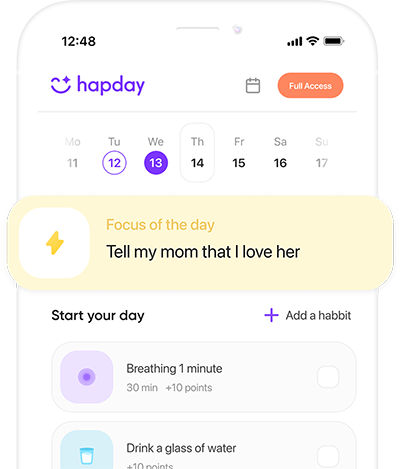Table of Contents
- Understanding Sensory Overload
- Common Triggers and Symptoms
- Strategies to Overcome Sensory Overload
- Create a Sensory-Safe Environment
- Develop Coping Mechanisms
- Structured Routine and Predictability
- Therapeutic Interventions
- Diet and Nutrition
- The Role of Technology
- Supporting Individuals with ASD
- The Future of Sensory Overload Management
- Conclusion
- References
Understanding Sensory Overload
Here’s the thing: sensory overload happens when our senses—yep, all five of them—are bombarded by too much stuff from our surroundings. Folks with ASD often process these sensory bits a little differently, leading them to be ultra-sensitive to sound, light, textures, and smells (among other things). According to a deep dive by the National Institute of Health, an overwhelming 90% of people with ASD claim they’ve hit this overload wall at least once. And let’s be honest, who wouldn’t be rattled? It can fuel anxiety, confusion, and physical discomfort. It’s like being caught in a relentless storm, which is exactly why grasping how to manage it makes all the difference.
Common Triggers and Symptoms
Now, what sets off this sensory mayhem? Could be anything from a dog’s loud bark to the suffocating hubbub of a crowded subway station. Bright lights, strong smells, or the odd, annoying flicker of a neon sign can tip the scale too. And the symptoms? They range wide: irritability, restlessness, anxiety, even tension headaches or stomach churns. The Journal of Autism and Developmental Disorders—someone please tell them to shorten that name!—reported in a 2021 study that sensory overload can cause people to retreat from social situations. It’s a bit of a domino effect, impacting social skills and emotional health.
Strategies to Overcome Sensory Overload
1. Create a Sensory-Safe Environment
First things first: carve out a little bubble of calm. How? Maybe slap on those noise-canceling headphones or find a quiet corner with soft lights. Even the textures on furniture or wall colors can help—details matter. Autism Research (you know, those smart folks) discovered that these sensory-safe zones can slash stress in ASD individuals.
2. Develop Coping Mechanisms
Wanna tackle this head-on? Teach some coping tricks that offer a sense of control. Things like deep breathing, mindfulness, and grounding exercises—they’re tools in the toolkit. The Journal of Clinical Psychology mentioned that mindfulness practices dropped anxiety by about 30% for people with ASD wrestling with sensory mess.
3. Structured Routine and Predictability
Predictable is peaceful, right? A steady schedule offers nice cushioning against unexpected sensory spikes. Visual schedules, timers, and sticking to routine can be the guardian angels here. Research courtesy of Autism Speaks observes that this routine gives back control, reduces overload episodes, and adds a sense of stability.
4. Therapeutic Interventions
Enter the professionals! Occupational and sensory integration therapy can work wonders. Therapists sharpen those sensory skills and tailor strategies to the individual’s needs. The American Journal of Occupational Therapy found that these interventions could dial down sensory woes by up to 50%.
5. Diet and Nutrition
Food for thought, literally. What you eat might sway sensory sensitivity. Some studies hint that pulling back on sugar or knocking out food intolerances can ease the sensory load. As per a study in the Journal of Autism and Developmental Disorders, 40% of the participants saw improvements after dietary tweaks.
The Role of Technology
Here’s where it gets cool: tech steps in to lend a hand. There are apps crafted for those with ASD, featuring VR environments where they can practice coping strategies—or maybe even tune into sensory-friendly music playlists. This tech can be a real-deal lifeline for individuals and their caregivers.
Supporting Individuals with ASD
Support—isn’t that what it’s all about? It falls on families, teachers, and workplaces to step up, understand what those with ASD go through, and make space by offering accommodations. Training and workshops go a long way in spreading awareness and equipping these supporters with useful strategies.
The Future of Sensory Overload Management
The train of knowledge and awareness keeps chugging along, bringing us better strategies for handling sensory overload in ASD. As therapies, assistive tech, and education evolve, the future looks bright in making sensory overload less of a bogeyman.
Conclusion
Tackling sensory overload involves more than a one-size-fits-all fix. It’s about crafting environments that are gentle on the senses, learning ways to cope, and diving into targeted therapies. ASD folks and their families learn to curb sensory anxieties and embrace life’s experiences. And yep, community awareness makes a world of difference.
Feeling at the end of your rope? Unpack personalized routes to handle sensory overload with Hapday. Discover more here.
References
- National Institute of Health, “Sensory Processing in Autism Spectrum Disorders.”
- Journal of Autism and Developmental Disorders, “Understanding Sensory Overload in Autism.”
- Autism Research, “Creating Sensory-Friendly Environments.”
- Journal of Clinical Psychology, “Mindfulness Techniques for Autism.”
- Autism Speaks, “The Impact of Routine on Autism.”
- American Journal of Occupational Therapy, “The Effectiveness of Sensory Integration Therapy.”
- Journal of Autism and Developmental Disorders, “Dietary Influences on Sensory Sensitivity.”

